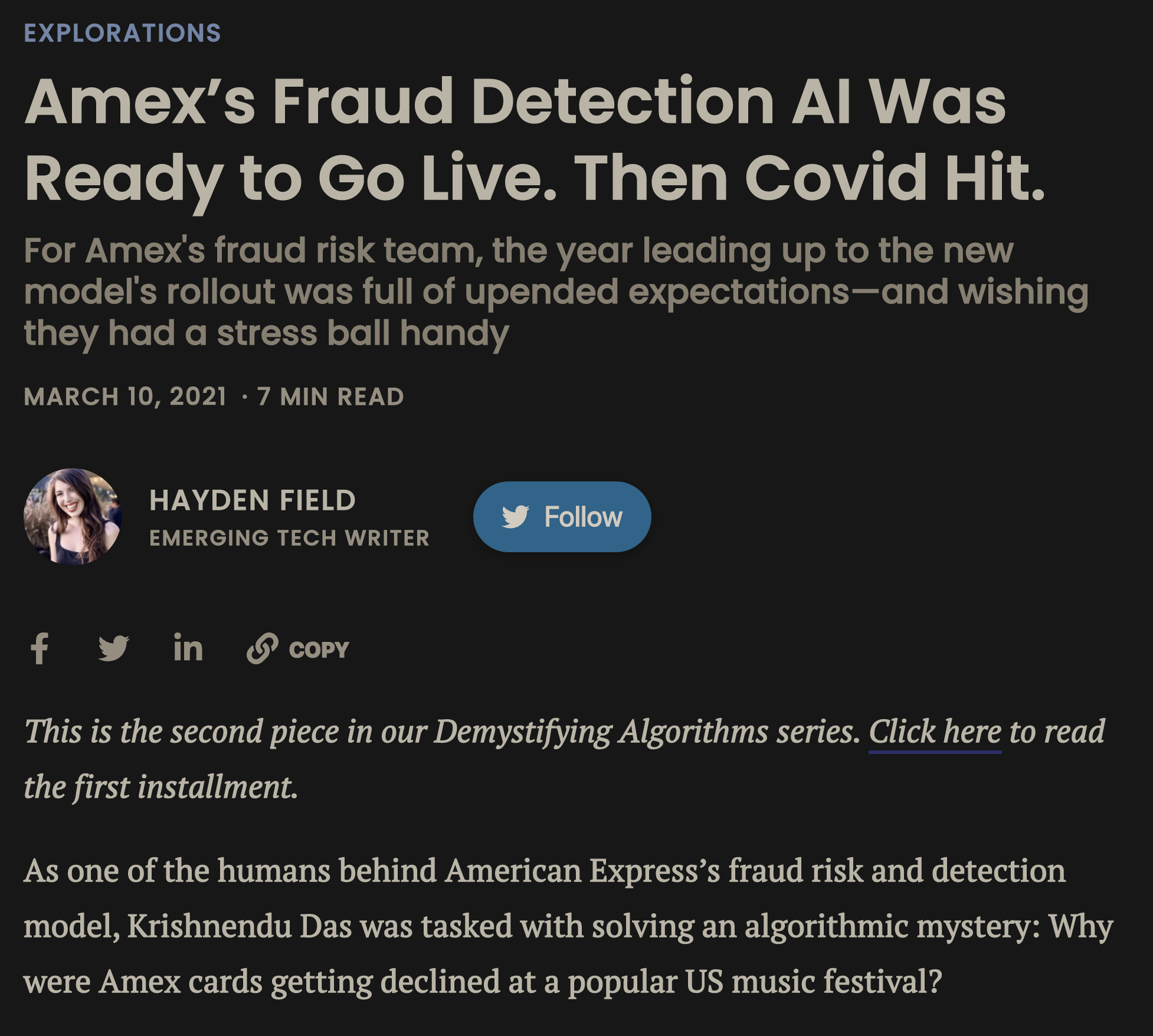Here is a recommended reading tip for you. Emerging Tech Brew posted a fantastic article which provides a behind the scenes look at the American Express Credit Card Fraud Modeling Team as they grappled with COVID and the rapid changes in fraud patterns on the portfolio.

As one of the humans behind American Express’s fraud risk and detection model, Krishnendu Das was tasked with solving an algorithmic mystery: Why were Amex cards getting declined at a popular US music festival?
It isn’t often that you will get a behind the scenes look at how data scientist work at one of the most secretive companies in the industry but this article does a pretty good job of giving you an idea of just how much work goes into rolling out a new model.
Some Interesting Things I Learned
Here were some of the interesting things I learned from the article:
- Move to Machine Learning in 2014 – Amex used to use more of a logistic regression and rules based system and didn’t seem to start really using true machine learning until 2014 when they felt that computing power and hardware finally reached a point where they could do it right.
- They landed in Gradient Boosting – In 2014, Amex finally landed on a winning technique for itself, gradient boosting machines—i.e., the forest of decision trees we just explained—and implemented its first-ever ML model for fraud detection. It led to a 30% improvement over Amex’s legacy systems, which were simpler, logistic regression models.
- They have massive data and data scientists involved the modeling – Their newest model, called Gen X, executes a sequence of more than 1,000 decision trees. It was developed on billions of observations and sweeps more than $1.2 trillion in annual spending. The fraud decision science team has tripled from 10 decision scientists in 2014 to about 30, including Krish and his team, who monitor the model 24/7 and update it at least once a year.
- Everything changed in 2020 – Spending patterns changed overnight, which triggered new fraud alerts. Supermarkets were inundated with customers they’d never seen before, who moved from store to store searching for necessities to stockpile. Former in-person shoppers were buying everything from pajamas to prescriptions online. And everywhere, people were spending large chunks of money all at once.
It’s a great article so check it out!



